Bentheogennema burkenroadi Krygier and Wasmer, 1975Common name(s): Burkenroad blunt-tail shrimp |
|
| Synonyms: | 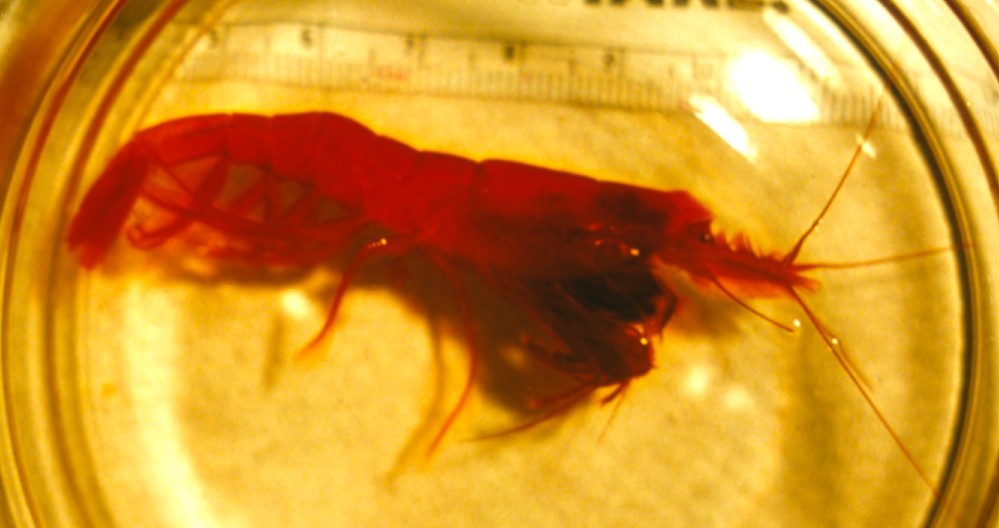 |
| Phylum Arthropoda
Subphylum Crustacea Class Malacostraca Subclass Eumalacostraca Superorder Eucarida Order Decapoda [Informal Group] Natantia Suborder Dendrobranchiata Family Penaeidae |
|
| Bentheogennema burkenroadi, bathypelagic 100 mi off Point Conception, CA | |
| (Photo by: Dave Cowles, Sept 1995) | |
How to Distinguish from Similar Species: Bentheogennema borealis has a median ridge dorsally on its carapace which interrupts the transverse carinae, + the telson has 2 pairs of stout median spines.
Geographical Range: Northeastern Pacific ocean
Depth Range: Bathypelagic
Habitat: Bathypelagic
Biology/Natural History:
| Return to: | |||
| Main Page | Alphabetic Index | Systematic Index | Glossary |
References:
Dichotomous Keys:Kozloff 1987, 1996
Wicksten, 2009
General References:
Butler,
1980
Scientific Articles:
Krygier, Earl E. and Robert A. Wasmer, 1975.
Description
and biology of a new species of pelagic penaeid shrimp, Bentheogennema
burkenroadi, from the northeastern Pacific. Fishery
Bulletin
73:4 pp. 737-746
Web sites:
General Notes and Observations: Locations, abundances, unusual behaviors:
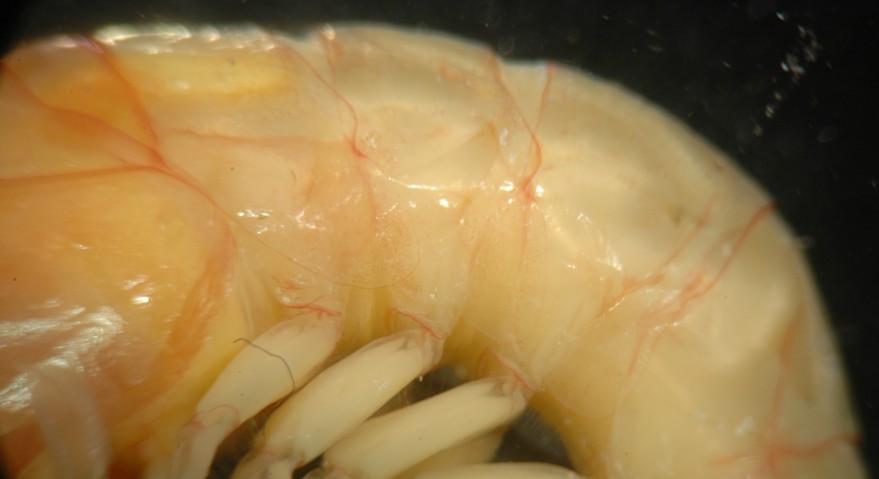
The epimeron of abdominal segment 2 does not overlap that of segments 1 and 3. This view shows the thorax to the left and abdominal segments 1-4 with the bases of the pleopods.
Photo is of a preserved specimen.

This animal swims through the water with its feathery pleopods.
The head of this preserved specimen is to the right.

In this photo the dendrobranchiate (tree-like in structure) gills can
be seen hanging from below the carapace.
In this species the gills are podobranchs,
which is an epipod
gill attached to the coxa
(basal segment) of the legs.
These podobranch
gills are arising, left to right, from the third maxilliped
and from pereopods
1-3.
Photo of a preserved specimen
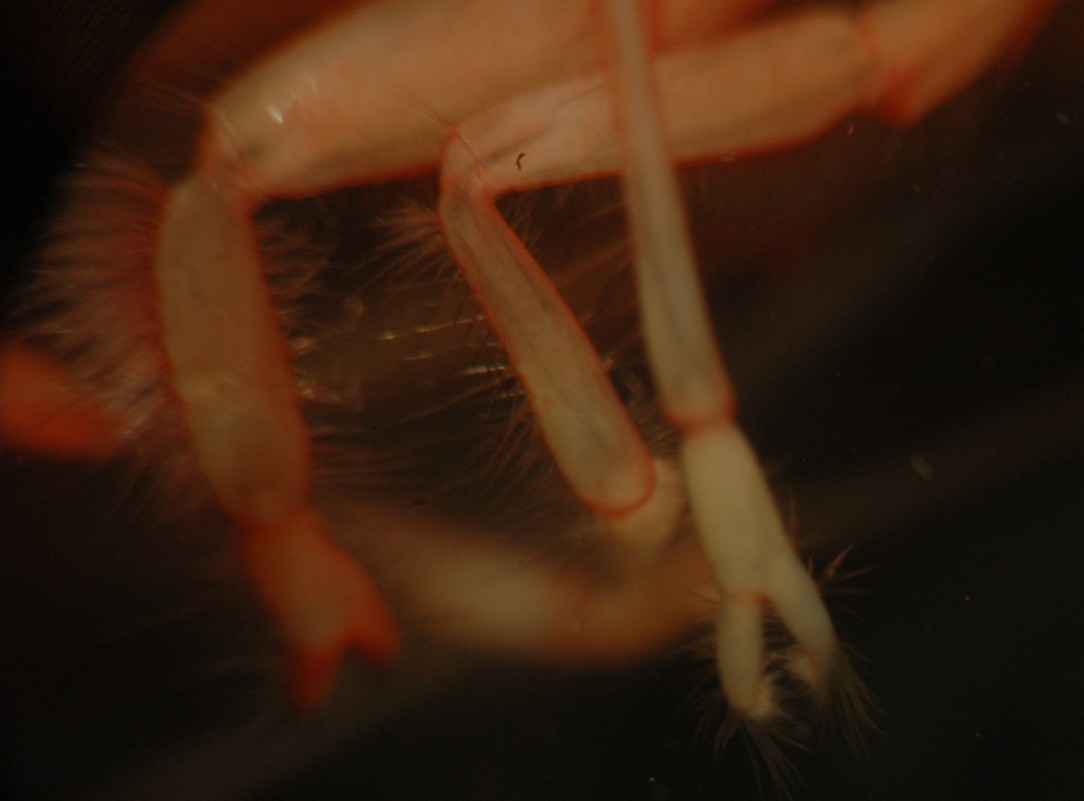
As a member of family Penaeidae, pereopods 1-3 are all chelate.
This photo of a preserved specimen shows the chelae
on pereopods
1 (left) to 3 (right).
.
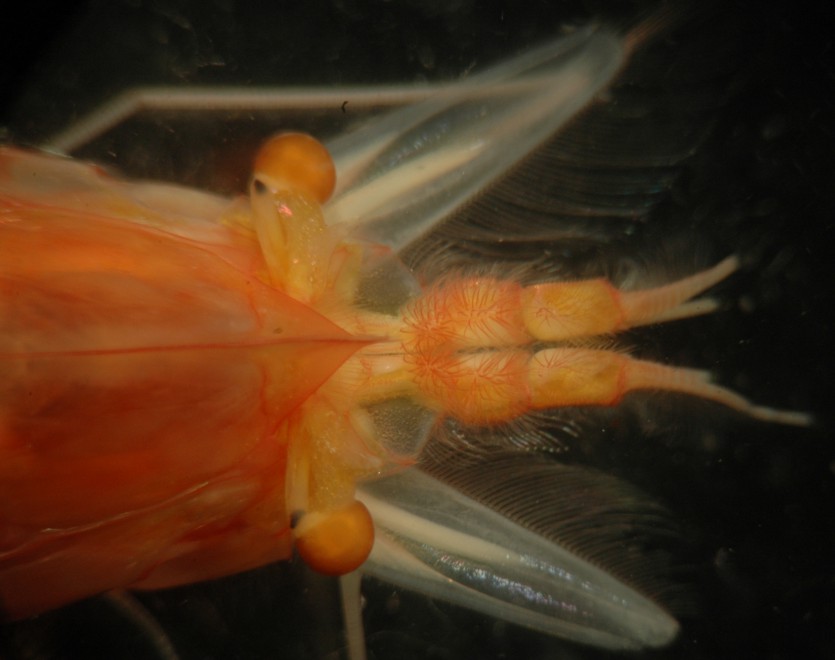
Both the antennules (first antennae) and the antennal scale have
prominent
setae
which together make the animal look like it has a thick moustache from
a distance.
Note also the long second antennae, visible on the left side of the
animal (top), which extends forward, has a sharp bend, and has a long flagellum
extending back.
Photo of preserved specimen.
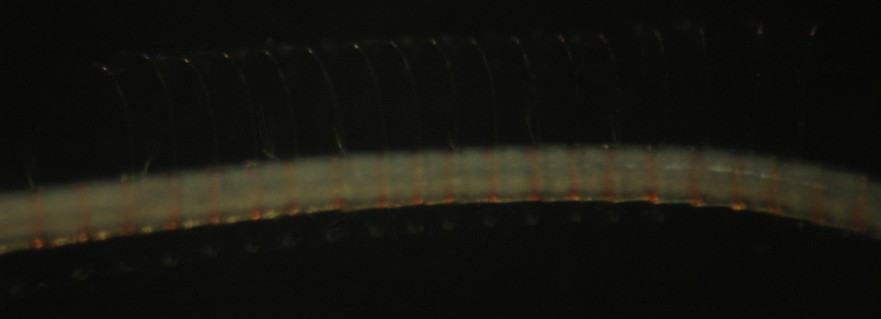
The long antennal flagellum
is lined along one side with a double row of curved setae
which arch outwards and then curve toward one another like the ribs of
a vacuum cleaner hose.
Shorter, enervated setae
are found in the middle of the circle formed by the long setae.
Together, this structure forms a lateral-line like detector of
near-field
sound or vibrations.

As can be seen in this dorsal view of a preserved specimen, the curving
vertical grooves on the carapace
cross the mid-dorsal ridge but are not interrupted by it.
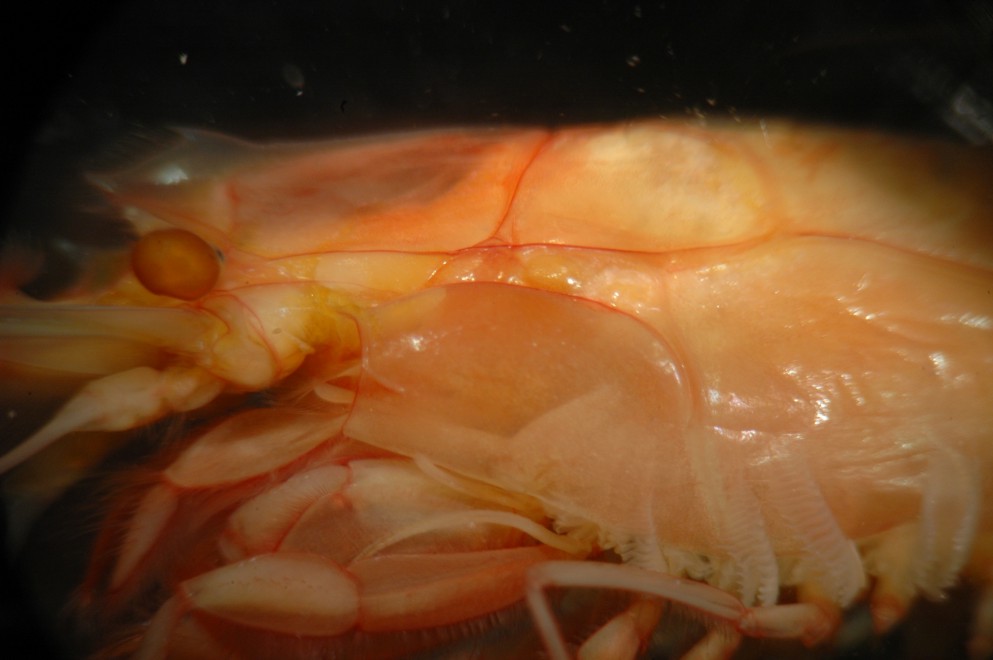
The same grooves plus other carinae
can be seen here in this side view of the carapace
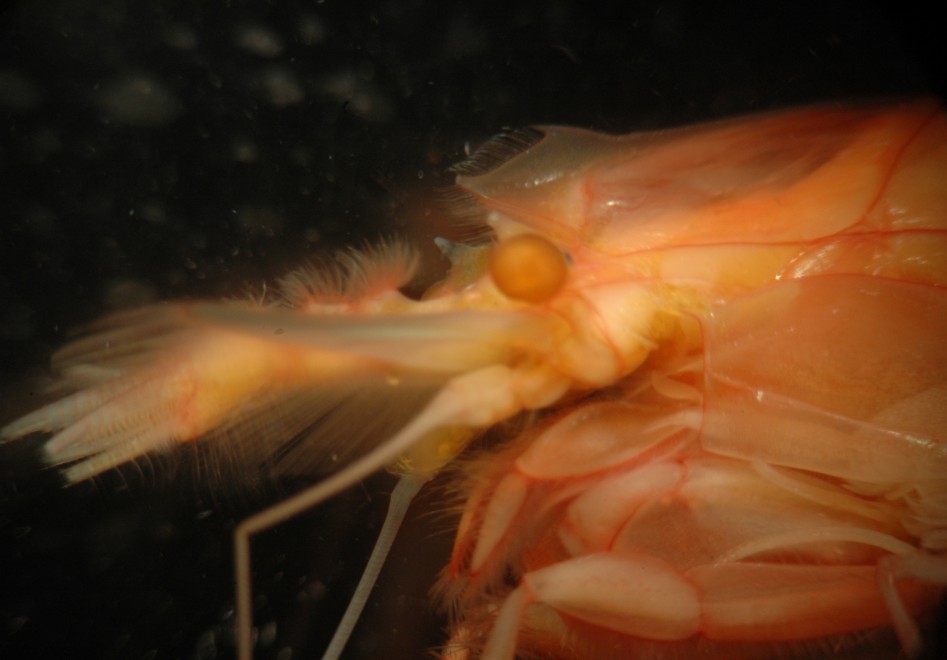
The distinctive rostrum
has a dorsal spine, a line of forward-pointing setae,
and an anterior spine.
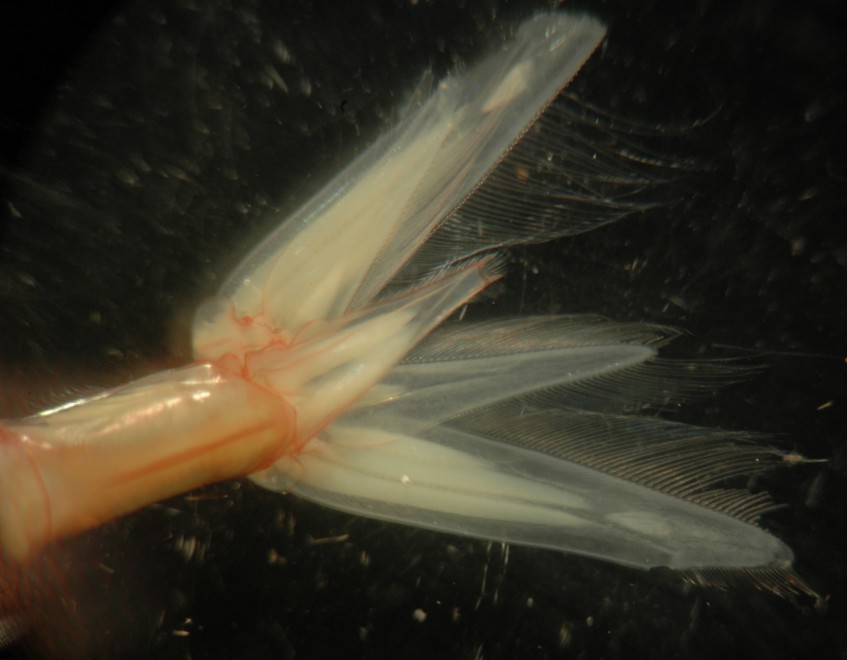
The telson
is shorter than the uropods.
It ends with only one pair of stout median spines, (with a row of setae
between them)
Authors and Editors of Page:
Dave Cowles (2006): Created original page